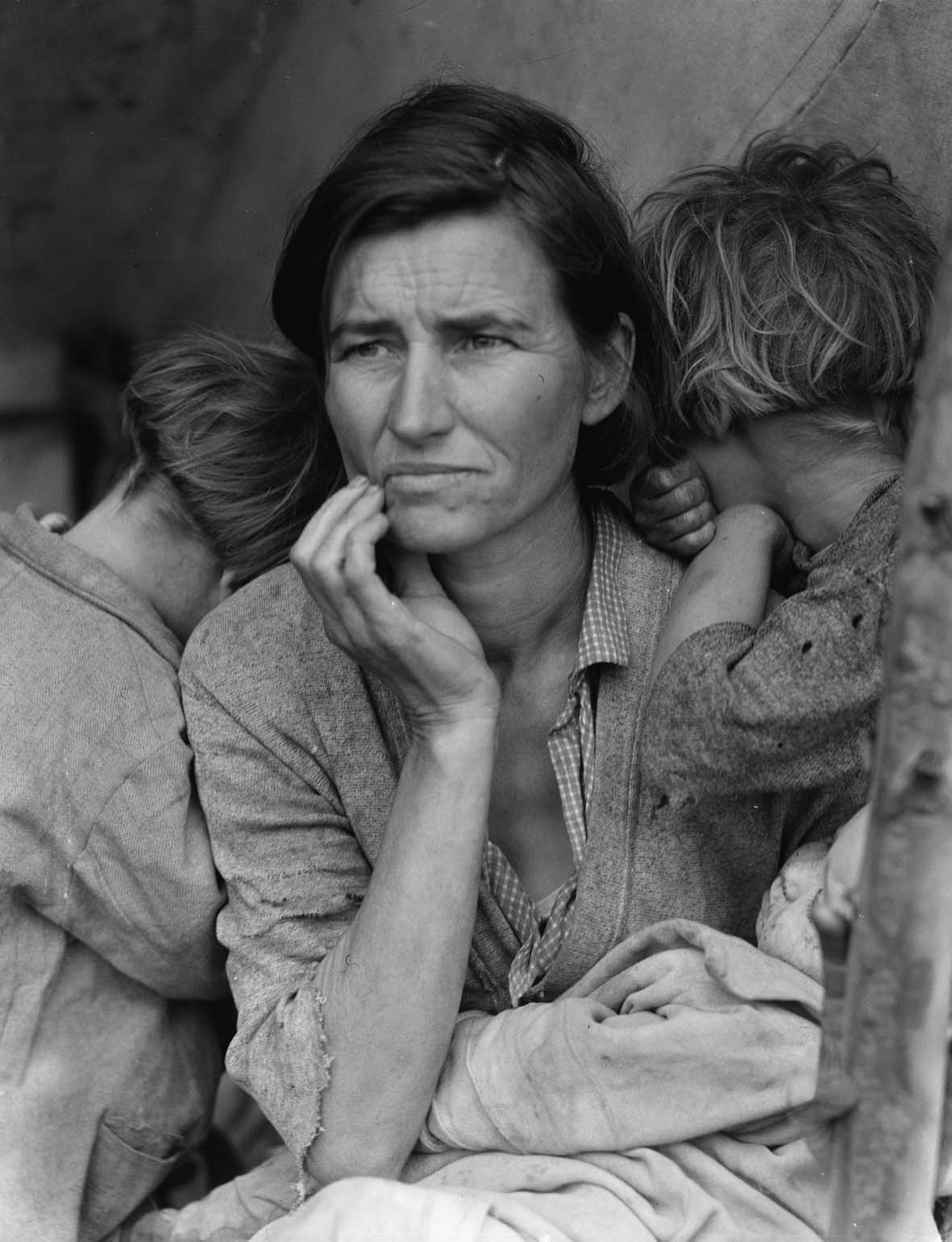From October 21, 2023 to February 4, 2024, the Civic Museums of Bassano del Grappa, in collaboration with CAMERA - Italian Center for Photography in Turin (which organized the first stage of the exhibition), will present to the public the work of Dorothea Lange (Hoboken, 1895 -San Francisco, 1965), celebrated American photographer, co-founder in 1952 of Aperture, the world’s most influential photography magazine, and the first woman photographer to whom MoMa dedicated a retrospective in 1965, just a few months before her death.
Entitled Dorothea Lange. The Other America, the Venetian exhibition, curated by Walter Guadagnini and Monica Poggi, will present nearly two hundred shots, will have as its main focus and novelty a special lunge on the birth of Migrant Mother, the masterpiece of Lange, known as "the photographerof the people" (Photographer of the people). This is how Dorothea Lange introduced herself in her business card: a middle-class New Jersey woman, she had chosen not to photograph the stars or the great protagonists of her time, to focus instead on the “last people” of an America that was sinking into the Great Depression. The gaze with which Lange captures this forgotten humanity is not pietistic but profoundly “inclusive”: in fact, her images show understanding, sensitivity, participation and immense humanity, combined with an ability to read the social context reinforced by her sentimental and professional relationship with her husband, economist Paul Taylor. A native of New Jersey from a bourgeois family of German descent, at the age of nine she was stricken with polio that left her with a limp; then the quarrel with her father, who abandoned the family and whom she courageously repudiated by taking on her mother’s surname.

Her beginnings saw her in New York with Clarence White and Arnold Genthe. In 1918 she left on a photographic expedition around the world, a trip that ended prematurely for lack of money in San Francisco, where she opened her own studio. After working for a decade in the field of professional portraiture, embracing a pictorialist style, she adhered in the early 1930s to the aesthetics of straight photography to become the godmother of a poetics of reality and a witness to the plight of the weakest and most marginalized: from the unemployed and homeless in California to the laborers forced to migrate from town to town in search of fields that could still be cultivated.
The dramatic events that marked the years of the Great Depression brought her into contact with the great social and photographic project of the “Farm Security Administration,” of which she became the leading representative. In the second half of the 1930s, therefore, she photographed the tragedy of rural America hit by a very harsh drought, producing some of her most dramatic and most famous images together: in this context Migrant Mother was in fact born, an icon with which Lange wrote an indelible page in the history of photography, imposing herself as a pioneer of American social documentation. However, dwelling on those powerfully evocative images one realizes that there is something more. It is the gaze of an educated and refined artist who manages to narrate such dramatic themes and subjects as the climate crisis, migration, and discrimination with surprising force, incisiveness, and modernity. Despite the fact that we are several decades removed from these images, Lange’s themes are absolutely topical and provide food for thought and opportunities for debate about our present.
Commissioned by the U.S. government, Lange also later dealt with the controversial issue of prison camps for Japanese citizens on U.S. soil after the Pearl Harbor attack, a series that due to its critical attitude toward government policy would be substantially censored and not reported until many years later. These photographs-further evidence of the depth and lucidity of Dorothea Lange’s photographic gaze-will be exhibited for the first time in Italy so comprehensively at the very an event within the event, as the exhibition is accompanied by the reopening of the Museo Civico di Bassano del Grappa, which, after six months of modernization and redevelopment work, is rededicating its important permanent collections to the public in completely renovated spaces and with a fascinating, updated layout full of new works.
Through the selected works in the exhibition, some of which are not on display in the Turin leg of the show, from different nuclei of collections that preserve the work of Dorothea Lange (including in particular the Library of Congress in Washington, the U.S. National Archives), the exhibition will focus mainly on the golden period of the photographer’s career, from the 1930s to World War II, while also presenting earlier and later shots to account for the variety and depth of her research, always aimed at rendering a sincere and participatory portrait of her surroundings. As she herself stated, “the camera is a tool that teaches people how to see the world without it.”
The exhibition is sponsored by the Veneto Region. Official sponsor: pba S.p.A. For information: +39 0424 519901/904 | info@museibassano.it | www.museibassano.it
 |
| America of the last: 200 works by Dorothea Lange on display in Bassano |
Warning: the translation into English of the original Italian article was created using automatic tools. We undertake to review all articles, but we do not guarantee the total absence of inaccuracies in the translation due to the program. You can find the original by clicking on the ITA button. If you find any mistake,please contact us.